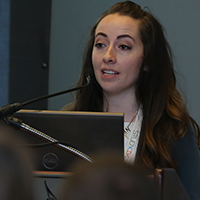It’s all well and good for drug and device companies or contract research organizations to temporarily share technology with study sites that will keep externally sponsored trials running efficiently, but what happens when an investigator based at a site with limited tech capabilities of its own is acting as the sponsor? Worse yet, what happens when that investigator’s site is itself in charge of overseeing all the complications inherent in a multicenter study?
Such were the musings of a trio of experts in a session on “Getting Multicenter Studies Under Control with Technology” at ACRP 2019 in Nashville on Saturday (April 13). Ryan Jones, MBA, CEO of Florence Healthcare Inc., said site investment in study-aiding technology is critical, given that in recent years endpoint counts in study protocols have increased by 86%, the number of sites doing studies has risen by 65%, and the number of patients enrolled per site has dropped by 18%.
Further, Ryan said, collaboration between study sites appears to be on the rise thanks to more multicenter studies being led by sites themselves. Delivering some examples of technology tools that can facilitate such collaboration were his co-presenters, Melissa Bolton, MBA, CCRC, a clinical project manager with the University of Utah, and Jessica Rodriguez, PhD, CCRP, a research program coordinator with the Mount Sinai Health System.
Bolton described several strategic approaches for using technology to spread work equitably across study teams, including taking advantage of note-sharing and file-sharing platforms and automating processes that require considerable manual effort. She also recommended that sites modernize their remote monitoring capabilities through a variety of tactics.
Training is key to many uses of new technology, such as electronic regulatory binders, Bolton added. “If research staff are new or inexperienced, they likely won’t be aware of everything that should be in a regulatory binder,” she warned.
Rodriguez, who is currently involved in an 18-site neurosurgery trial, expanded on the electronic regulatory binder topic by noting that using such technology can aid sites in recovering from natural disasters, compensating for study staff turnover challenges, and keeping track of correspondence with institutional review boards.
However, Rodriguez cautioned, sites need to follow their institutional policies—if any—on maintaining physical regulatory binders onsite in addition to their use of any binder tech tool. “Even though you have the technology, you have to use it properly,” she advised. “[And] you have to simplify it so that people will use it.”
Author: Gary Cramer



